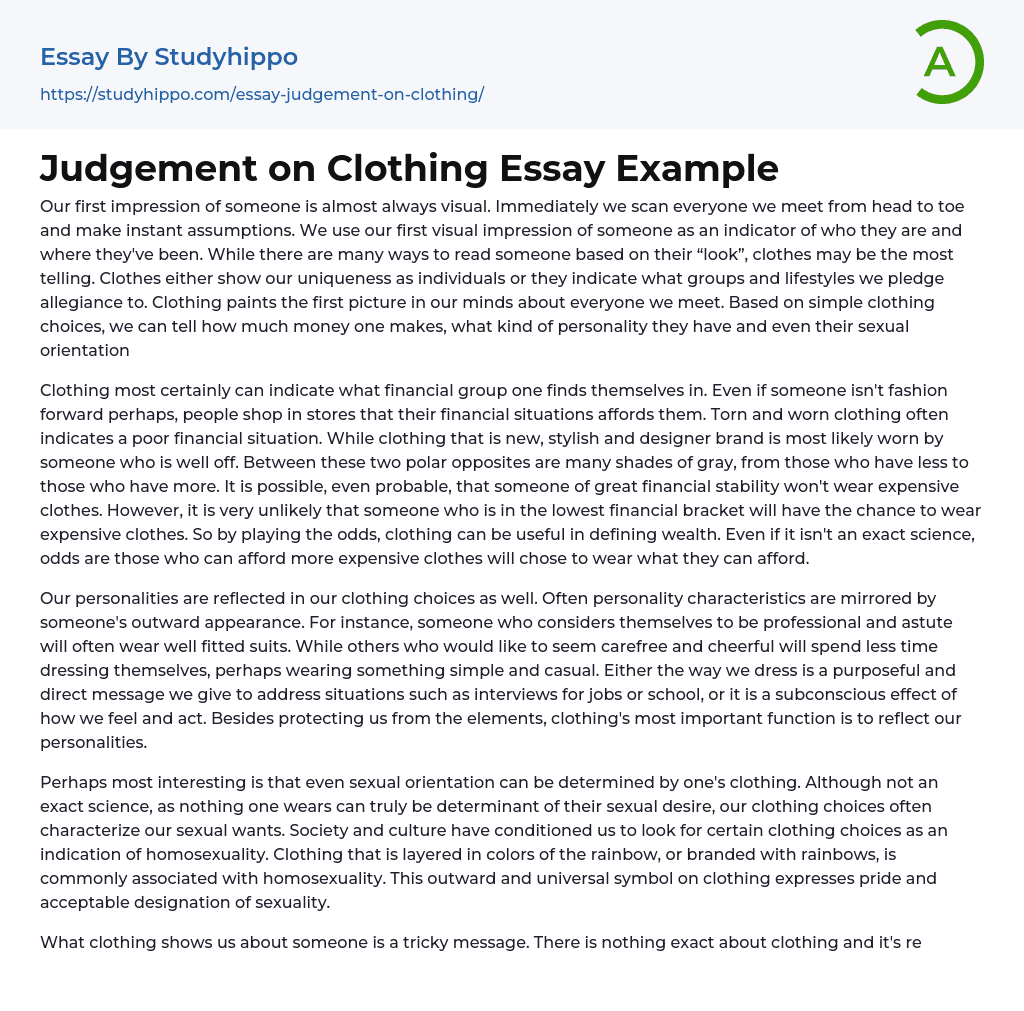Upon first encountering someone, we tend to form our initial perception primarily based on their appearance. In that moment, we quickly take note of every aspect of their body and make immediate judgments. This initial visual impression serves as a clue to their identity and background. Although there are multiple ways to interpret how someone looks, clothing often provides the most insight. Clothing showcases our uniqueness or indicates our affiliation with specific groups and lifestyles. Fashion plays a significant role in shaping our initial impression of anyone we come across. By simply analyzing one's clothing choices, we can infer their financial status, personality traits, and even their sexual orientation.
The condition and type of clothing someone wears can reveal their financial status. Worn and torn garments often indicate a poor financial situation, wh
...ile new and stylish designer brands suggest wealth. However, there are different levels of financial situations in between these extremes. Even if financially stable individuals may choose not to wear expensive clothes, those in the lowest income bracket rarely have that option. Thus, clothing can be a helpful indicator of wealth, although it may not always depict an accurate representation. In general, people who can afford costly clothes tend to wear them.
The clothing we choose reflects our personalities, with our outward appearance often mirroring our personal traits. For instance, those who see themselves as professional and astute tend to select well-fitted suits, while those aiming for a carefree and cheerful image may prioritize simpler and more casual attire. Our clothing not only serves as deliberate means of communication in certain situations like job interviews or school but also
subconsciously manifests our emotions and behavior. Clothing plays a crucial role in showcasing our personalities beyond just protecting us from the elements.
The choice of clothing can provide clues about a person's sexual orientation, although it is not an absolute indicator of their desires. Our society and culture have taught us to associate specific garments with homosexuality. Clothing that includes rainbow colors or symbols is often associated with homosexuality and is viewed as a confident and acceptable way to express one's sexuality.
The message conveyed through clothing is intricate, as it does not accurately reveal someone's financial status, personality, or sexual orientation. It is crucial to avoid judging others solely based on their appearance. However, when seen as part of the whole rather than a complete portrayal of one's life, clothing can offer insight into individuals. In professional environments, clothing can convey motives and professionalism. Even attire that indicates group affiliation can hold value by helping society connect with like-minded individuals. Understanding someone's preferences and interests through their attire can foster new interactions and friendships. Clothing serves as a tool to comprehend identity and origins while bringing people closer together without compromising uniqueness. Although clothing alone cannot tell the entire story, it contributes to forming a partial picture.
- Jeans essays
- Clothing essays
- Cosmetic Surgery essays
- Fashion design essays
- Footwear essays
- Boy essays
- Gay essays
- Gender essays
- Gender Identity essays
- Gender Roles In Society essays
- Gender Stereotypes essays
- Girl essays
- Homosexuality essays
- Human Sexual Behavior essays
- Lgbt essays
- Man essays
- Masculinity essays
- Sexual Orientation essays
- Transgender essays
- Woman essays




